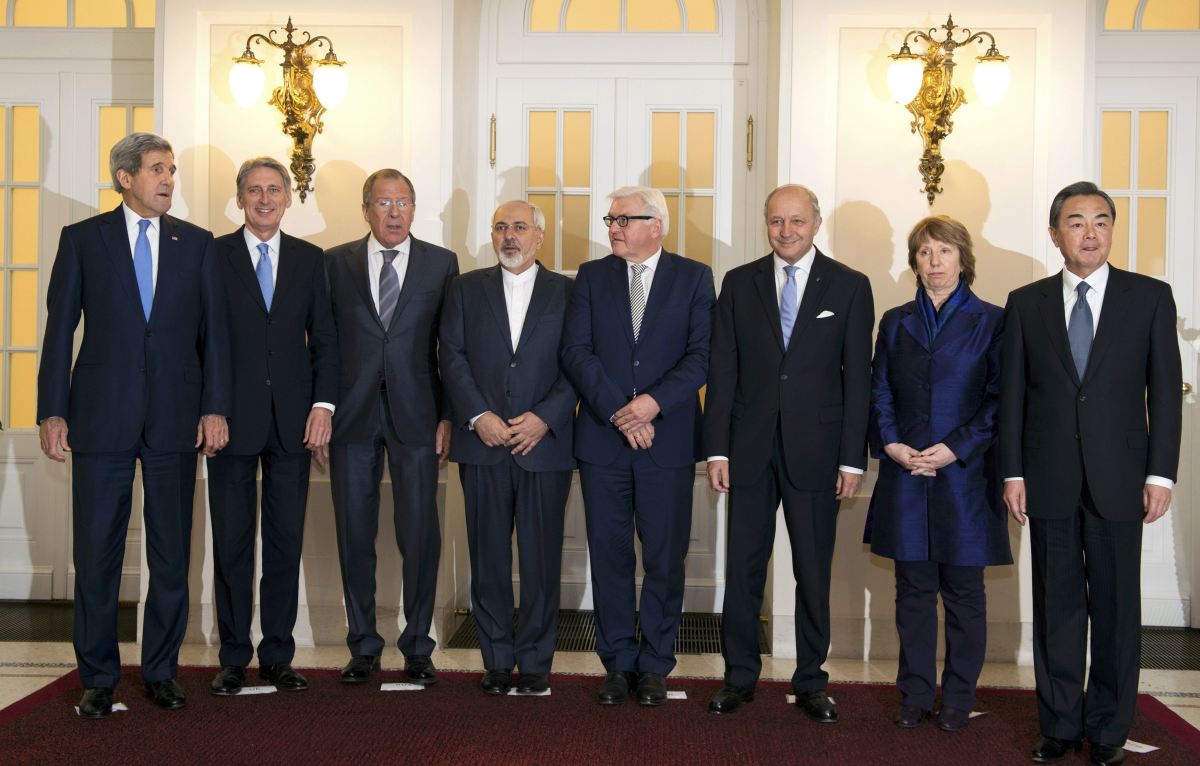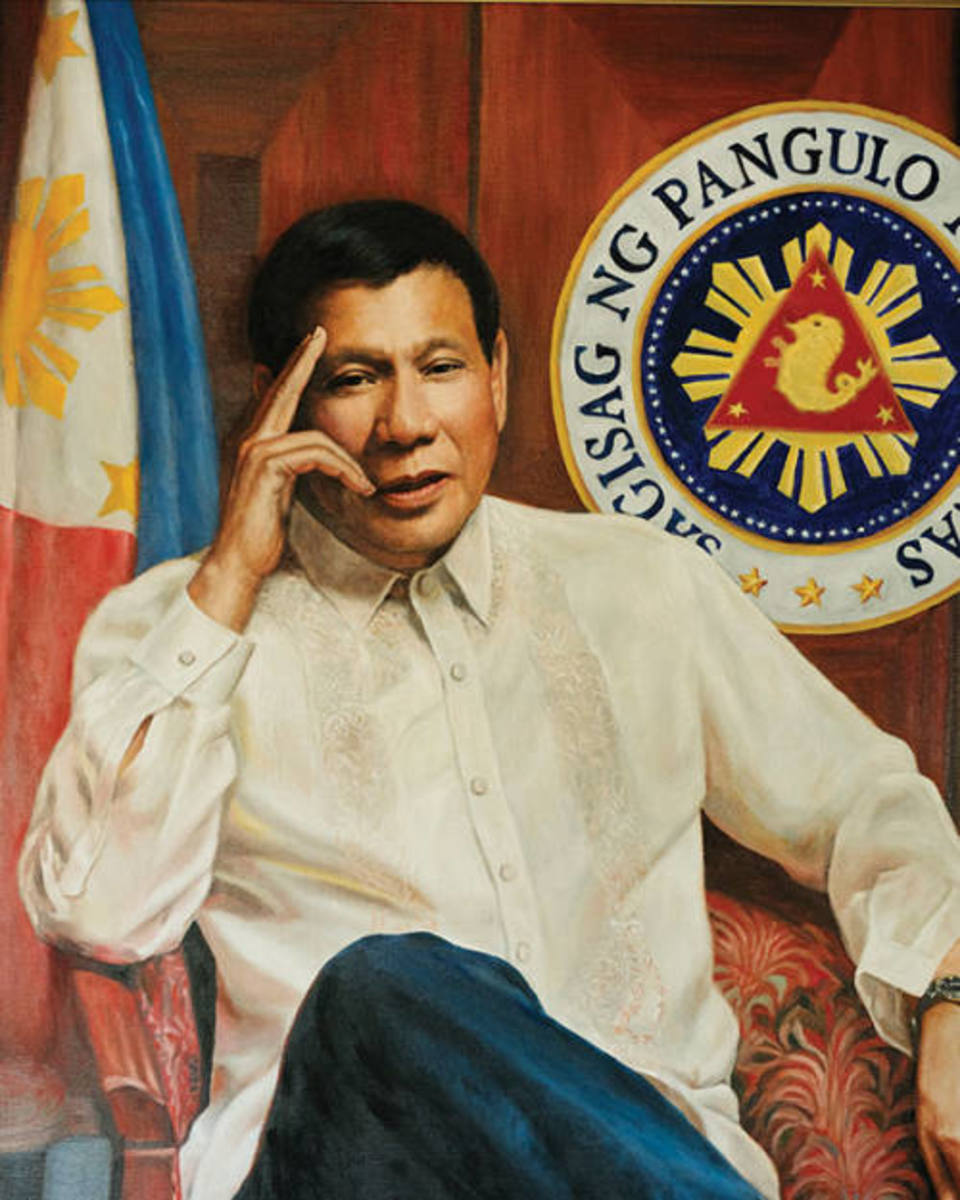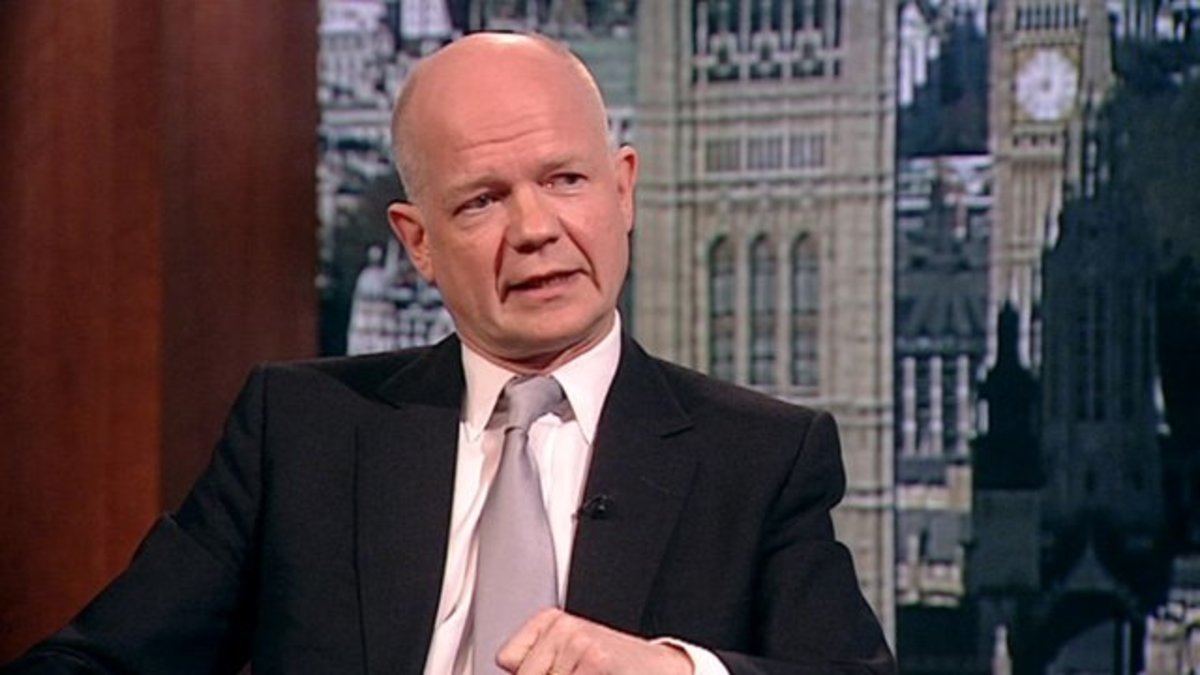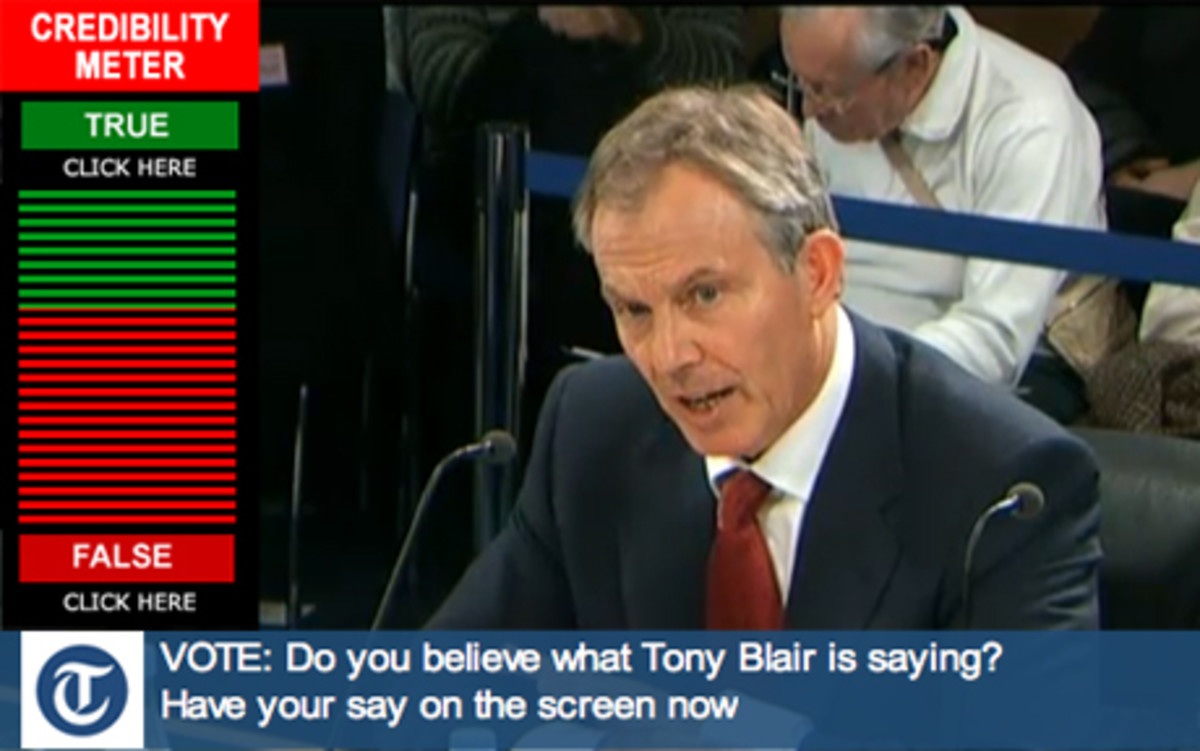The Fraud, Lies and Deceit of the Iran Nuclear Deal

The Unthinkable Reality of a Nuclear Iran
In conjunction with UN Security Council’s five permanent members (US, UK, France, China, Russia) and Germany (P5+1), the Obama administration concluded 20 months of sequestered negotiations with the Iranian Regime allowing what can objectively be described as lenient and generous terms that only 2 years earlier would have been considered unthinkable: allowing Iran to pursue its long desired goal of going nuclear within a decade and a half. Much of the rhetoric from the Obama Administration has shifted from past assurances of never allowing Iran to build nuclear weapons, through the use of tough economic sanctions and anytime, anywhere inspections, to now deferring Iran’s breakout time (the time needed to produce enough weapons grade fissile material for an atomic bomb) to 15 years. And this presumably only after it meets all of the requirements of the agreement. With such a glaring departure from the red-lines that were set by past US and UN council leaders, it begs the question - what in this agreement so completely reassures the UN security council to allow a regime long regarded as the number one sponsor of terror to pursue a program of weapons of mass destruction?
Many of the details of the agreement have not been allowed into the public domain as a large number of documents contained within the agreement are considered “in the interest of national security” and can only be viewed privately by congressional members. Perhaps even more troubling was the revelation that a number of side deals exist between the Iran and the IAEA, that not even Obama nor Secretary of State John Kerry and lead negotiator for the US, have seen. From what has been gathered, the new deal promises to block all of Iran’s pathways to a nuclear bomb by:
- Restricting the amount of nuclear fuel that Iran can stockpile over the next fifteen years
- Capping its uranium enrichment purity level at 3.67 percent for fifteen years
- Requiring Iran to reduce its current stockpile of low enriched uranium by 98 percent, and
- Reducing the number of centrifuges spinning at Iran's primary enrichment center for ten years.
Simply for coming to the negotiating table, as a signing bonus, over $100 billion in frozen assets are released no matter what may occur in the future in terms of complying with the agreement. At the same time, the agreement lifts embargoes on the delivery of conventional weapons and ballistic missiles to Iran after five and eight years, respectively, and possibly sooner if the International Atomic Energy Agency (IAEA) verifies that the Iranian program is peaceful. The release of assets and sanction relief will most certainly benefit the deadly Iranian Revolutionary Guard including its Quds force division headed by General Qasem Soleimani accused of killing Americans in the Iraq war, as well as supporting the Assad regime in Syria, Hezbollah, and the Houthis in Yemen as well. To understand how the Iranian regime’s assets became frozen to begin with, a little history is necessary.
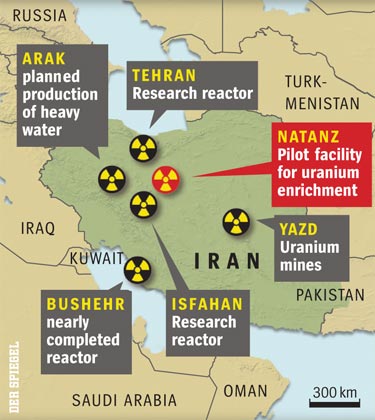
Iran’s Non-Proliferation Treaty and Secret Nuclear Program
Iran signed the Nuclear Non-Proliferation Treaty (NPT) in 1968 and ratified it in 1970, making Iran's nuclear program subject to IAEA verification. This was following the Shah approving plans to construct, with U.S. help, up to 23 nuclear power stations by 2000. U.S. and European companies scrambled to do business in Iran. President Gerald Ford signed a directive in 1976 offering Tehran the chance to buy and operate a U.S. built reprocessing facility for extracting plutonium from nuclear reactor fuel.
That all changed with the Iranian revolution of 1979 when most of the international nuclear cooperation with Iran was cut off. Iran has later argued that these experiences indicate foreign facilities and foreign fuel supplies are an unreliable source of nuclear fuel supply and decided to continue its atomic program in secret. In 2002, it was discovered that Iran had covertly constructed a gas centrifuge uranium enrichment plant at Natanz and a heavy water production plant at Arak. These were subsequently placed under International Atomic Energy Agency (IAEA) inspections. In 2006, Iran significantly reduced the inspection rights of the IAEA with its refusal to continue implementing the Additional Protocol to the Nuclear Non-Proliferation Treaty (NPT). This reversal prompted concern that it could conduct significant nuclear activities in secret. The Protocol requires Iran to supply the IAEA more detailed declarations of its nuclear activities and much greater access to nuclear sites than traditional safeguards.
The IAEA does not have confidence Iran is not building additional clandestine enrichment sites. Iran has refused to answer the IAEA’s questions about evidence of past and potentially ongoing work on nuclear weaponization and the development of nuclear warheads for missile delivery systems.
Iran's Frozen Assets and Economic Sanctions
At the time of the 1979 revolution, Iran’s deposed government had been waiting on the delivery of some $400 million in military equipment, for which it had already paid. The Pentagon later re-sold that equipment and the money was placed in an escrow account. Later executive actions blocked financial assets owned directly or indirectly by Iran’s central bank, major companies, and various government and military entities.
The agreement that was recently announced runs 159 pages, 60 of them dedicated simply to listing the individuals and entities that will have some or all of the financial sanctions against them lifted and their assets unfrozen. The U.S. has actually released billions of dollars to Iran already, such as the nearly $3 billion released last summer as a show of good faith during the negotiations over Iran’s nuclear program. However, according to the Congressional Research Service, there is still a substantial amount of money, real estate and other property being held.
.U.S. sanctions:
- In 1987, the United States imposed a new embargo on Iranian goods and services, "as a result of Iran's support for international terrorism and its aggressive actions against non-belligerent shipping in the Persian Gulf," the U.S. Treasury says.
- In 1995, the United States banned "involvement with petroleum development in Iran," the U.S. Treasury says. Two years later, the United States banned "virtually all trade and investment activities with Iran by U.S. persons, wherever located."
- In 2010, the United States passed the Comprehensive Iran Sanctions, Accountability, and Divestment Act. It revoked, for example, permission to import "certain foodstuffs and carpets of Iranian origin," the U.S. Treasury says. Those who violated the law could face a fine of up to $1 million and 20 years imprisonment.
- In 2011, the United States added further sanctions, including tightening restrictions on companies that provide Iran with equipment and expertise to run its oil and chemical industry. It prohibited groups that do business with financial institutions in Iran from holding accounts in the United States.
U.N. sanctions:
- Current U.N. sanctions against Iran are the result of a series of resolutions dating back to 2006. Material related to Iran's "proliferation-sensitive nuclear and ballistic missile programs" are embargoed, the United Nations says. One of the resolutions bans the export or procurement "of any arms and related material from Iran." A long list of individuals and entities are subject to a travel ban and assets freezes
EU sanctions:
- The European Union banned the import of Iranian crude oil and petroleum products. Assets of Iran's central bank in the European Union were frozen, and trade with Iran in gold, diamonds, and precious metals were blocked, the union said. The European Union already had in place a series of sanctions as well, targeting the oil and gas industry, nuclear industry, financial sector and more.

Iran’s Collapsing Economy
The Iranian economy has been imploding, In the first ten months of 2012, the Iranian currency, the rial lost more than 80% of its exchange value. There is evidence the regime’s incompetent economic policy in printing and thereby devaluing money was what produced the mess. However, the sanctions are wreaking havoc, especially after the 2010 Comprehensive Iran Sanctions, Accountability, and Divestment Act, because Iran relies on oil exports for about 80% of its public revenue. The economic pressure has caused Iran’s crude oil exports to fall to about 1.1 million barrels per day (mbd) at the end of 2013, from about 2.5 million barrels per day Iran in 2011. The crude oil exports are capped at the 1.1 mbd level. Iran’s economy has shrink by about 5% in 2013 as Iran’s private sector reduced operations.
One of the most pressing problems in Iran today is inflation. No one really knows what the Iranian inflation rate is because the officially announced rate is fictional. The government claims it is "only" around 22%. The Wall Street Journal cites sources who put it above 50%. Add to this that under Ahmadinejad, in December 2010, the government had withdrawn subsidies on food staples, electricity, water, and gas, further pushing up prices and affecting companies and households alike. Compounding these struggles is mounting unemployment, soaring to an unofficial rate of 35 percent as factories and businesses must lay off workers because they are unable to import vital goods and raw materials.
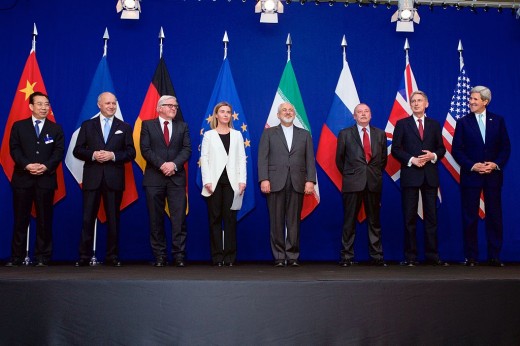
Iran Comes to the Negotiating Table
International sanctions on Iran’s key energy and financial sectors have harmed Iran’s economy to the point that Iran has no choice but to accept restrictions on expanding its nuclear program in exchange for modest sanctions relief. The official talks began after the election in 2013 of Iranian President Hasan Rouhani, widely seen as a reformer pledging to integrate his country into the global economy and ease its repressive political system. Mr. Rouhani has championed nuclear diplomacy, and some U.S. officials say he will be strengthened politically by a deal. It’s important to remember however unlike the executive in other countries, the President of Iran does not have full control over Iran's foreign policy, the armed forces, or nuclear policy, as these are ultimately under the control and are the responsibility of the Supreme Leader. Since that time, diplomats from P5+1 countries have been in discussions with the Iranians that eventually led to an interim deal called the Joint Plan of Action that offered some sanctions relief in exchange for curbs on Iran's nuclear program, pending further talks toward a permanent solution. The talks reached a comprehensive deal which had stretched way past their original deadline of June 30, 2015. Reportedly sticking points had remained, including Iran's insistence on the lifting of an embargo on the sale of conventional weapons and missiles, multiple sources said. From all accounts, the U.S. capitulated to most every one of Iran’s concessions that it demanded prompting even France’s representative to remark that the U.S. should go back to the negotiation table to secure a better deal.
Why an Iran Deal Now?
Given that Iran came to the negotiation table from a position of weakness with a desperate need for sanctions relief, it’s quite remarkable that their negotiators were able to achieve every possible concession it requested. The reason for this is that in many respects, entertaining requests from Iran to enter negotiations was self-destructive from the start. It began the catalyst for eroding hard won international sanctions with countries like Russian and China that did not fully support these sanctions preferring contracts for oil and lucrative weapons sales. The Obama administration further made it clear that military options were off the table effectively removing any leverage it may have held to press for a fair and effective negotiation. The Obama administration refused to heed calls to leave the negotiating table as it believed a nuclear deal was possible. The White House was wary of geopolitical consequences for faltered negotiations. International sanctions could break down, neighboring countries would have to recalibrate their strategies, and the prospect of military action would grow more likely. However, if a deal could be struck it would curb Iran’s nuclear program, opening the country up for inspections without unwanted military intervention. It’s interesting that during a working cocktail party at the White House with Senate Democrats on Tuesday night, President Barack Obama estimated the odds of reaching such an agreement at “less than 50/50.”
Obama’s World View
The Iran nuclear deal is the product of Barack Obama’s world view. In a speech in Egypt in 2009, Obama stated that no single nation should pick and choose what nations hold nuclear weapons and that Iran should have access to peaceful nuclear weapons. Indeed, the JCPOA agreement reflects Obama’s determination to follow through on a principle that the U.S. must unclench its fist and reach out to pariah states such as Iran, Venezuela and Cuba. That foreign policy vision, which distinguished Obama from his predecessors is remaking U.S. relations with the world in historic ways. Obama ended the half century-long U.S. isolation of Cuba, opened a dialogue with Venezuela, concluded a climate agreement with China and eked out victory in a congressional trade vote to advance the economic trade agreements with Asia. Many critics charge that Obama’s hesitancy to intervene militarily has been read as weakness by foreign rivals, emboldening them to challenge U.S. interests. Russia’s invasion of Ukraine, Syria’s largely unchecked civil war against insurgents, the failure of Mideast peace talks and even the rise of Islamic State are all situations in which Obama’s reluctance to use military power has led to dangerous results, in the view of his critics.
Obama’s Iran strategy took shape when he deployed diplomats in 2013 to meet secretly with officials of the Islamic Republic. The same year, he wrote a personal letter to Iranian President Hassan Rouhani, followed by an unprecedented 15-minute telephone conversation with the Iranian leader, the highest-level contact between the two nations in more than three decades. Once negotiations commenced, Obama stuck with them despite a campaign to undercut the talks by Israeli Prime Minister Benjamin Netanyahu, congressional Republicans and even some lawmakers in his own party. He fended off attempts to impose new sanctions on Iran amid the talks, which he said would have sunk an accord. This led to some rather unusual distortions of fact if not outright deceptions to sell the nuclear deal to the American public by the Obama Administration.
Misdirecting the American Public
A non-existent fatwa - A persistent meme that has circulated to legitimize the idea that Iran’s goals are peaceful is the supposed existence of a religious fatwa that was issued by Iran’s “Supreme Guide” Ali Khamenei, declaring nuclear weapons as illicit (haram) in Islam. Obama cites it as “proof” that Iran does not intend to build a bomb. The never before seen fatwa with no legal or religious weight is always credited to Obama as the source of this information even by some mullahs.
It’s this or It’s War - Obama is noted as saying “Either the issue of Iran obtaining a nuclear weapon is resolved diplomatically through a negotiation or it's resolved through force, through war, "Those are the options.” Well how about not lifting sanctions and pursuing more negotiations? This should not be viewed as an ultimatum even if Iran wishes it to be.
Iran’s cash bonus is not a game-changer - It’s clear Iran stands to gain hugely in the relief of sanctions even if you consider unfreezing $100 billion as a minor sum. Money it can use to support the Assad Regime in Syria, to support Hezbollah, to support Hamas in Palestine. Iran has made no secret of its desire for regional hegemony in the middle east and flowing billions of dollars into Iran will most certainly help it achieve its goals.
The international sanctions regime that brought Iran to the negotiating table and crippled its economy would begin to unravel - Not true. The U.S. started the negotiations after Iran approached us about sanctions relief precisely because the sanctions efforts were very effective and actually getting stronger. We should have pushed for keeping existing sanctions in place and adding new sanctions, either as an alternative or as leverage for a better deal. The world follows our lead here. If we have compelling reasons to keep sanctions in place, and we obviously do, we shouldn't worry about keeping them in place.
A protocal that no one has seen - In the context of robust inspections, the text of the protocol signed by the IAEA and Iran last remains secret, known only to the two signatories. So, Obama couldn’t know whether or not it contains “robust” inspections; he could only hope that would be the case. Statements by IAEA and Iranian officials indicate that the inspections are unlikely to be “robust.” Both assert that there will be no inspectors from countries with nuclear arsenals. That excludes the P5 to start with. The IAEA must ask Iran to arrange for inspections at least one month in advance, long enough to “cleanse” any site and change the decor. Even then, the IAEA must first consider using Iranian inspectors. The flow of unfrozen cash assets to Iran continues and is expected to top $20 billion by the end of the year. The ban on arms sales is quietly ignored, with Russia delivering S-300 anti-aircraft missiles and negotiating the sale of war planes and submarines. Tehran and Moscow signed 11 agreements last week. For its part, China has agreed to upgrade Iran’s nuclear industry, especially by supplying new plutonium plants.
The deal will reduce Iran's current stockpile of low enriched uranium by 98 percent - As of the final accumulation of votes by the Obama Administration to block any fillabuster of a veto of a likely "no" vote of the Iran deal, Iran announced it had "unexpectedly and suddenly" discovered a high reserve of uranium within it's boarders in the central province of Yazd. This is after, of course, Iran's long suspected attempts to import uranium from Kazakhstan and Zimbabwe.
Iran's rhetoric of death to American and Israel is just for domestic consumption - Throughout the course of negotiations with the P5+1 security council, Iran's supreme leader has been consistent in its statements of "Death to America" and "Death to Israel." Following the signing of the accord, the rhetoric continued and escalated leading John Kerry to even comment that he didn't understand it. The White House considers the "Of course, death to America" comments made by Iran’s Supreme leader, Ayatollah Ali Khamenei, as merely statements "intended for a domestic political audience." On the one hand, you have the White House suggesting that they have the maturity and nuance to rise above the, hard-line obsolete ideology by a justly angry Iran. And on the other hand, we have Iran's supreme leader speaking from the authority and mandates of their holy Quran preparing the way for the world domination of Islam. If Islamic Iran is blinded by religious ideology, the Obama Administration is equally blinded by secular apathy and the lack of understanding for the motivating force of religious fundamentalism. Especially Islamic extremist fundamentalism.
Iran can be our ally in the fight against ISIS - To expect Iran to offer the solution to the advance of ISIS in the region, as it was suggested sometime ago by elements within the administration, is as delusional as it is dangerous. Iran is only interested in increasing its negative influence over countries such as Iraq and Syria. Iran’s intervention in support of sectarian Shiite rule in Iraq only increased Sunni resentment and the rise of ISIS.
Military force is still always an option - Kerry has been noted as saying, only when pressed on the terrible facets of this deal, that we always reserve the right of military option. Besides being contradictory, it assumes that we can contain Iran at will. This will quickly not become the case, as we can see with North Korea, once they have a nuke. And they may be a small regional power now, but it's precisely the incremental growth that we should fear as what happened with Nazi Germany in WWII. They started out as a small regional power easily contained by the Western Alliance but quickly and rapidly grew as a major threat costing millions of lives.
http://nypost.com/2015/09/05/how-bad-is-the-iran-deal-lets-count-the-ways/
Public Fundamentally Misunderstands Iran Deal
Intervention by Congress Effectively Inverts Treaty Provisions of U.S. Constitution
Because the JCPOA has no legal basis and no mechanism for application, Obama engineered a hastily drawn UN Security Council Resolution, UNSCR 2231, to fill the gap. As a sponsor of the resolution, the US is committed to applying it whether the Congress likes it or not effectively cutting off any opposition to the agreement. This is because the Administration decided to declare the agreement to not be a treaty, since treaties require approval of two thirds of the Senate for ratification. As Secretary of State John Kerry bluntly stated in a hearing, they knew they could not get approval in the Senate. This clearly is was an outright attempt to avoid an open vote in Congress which is a guarantee of our Constitutional rights as Americans.
These act lead first to a hastily prepared open letter to Iran sponsored by Senator Tom Cotton. A group of 47 Republican senators signing the open letter to Iran's leaders warning them that any nuclear deal they sign with President Barack Obama's administration won’t last after Obama leaves office.
Congressional Republicans then moved to force review of an agreement by restricting action on the lifting of any sanctions against Iran by passing the Iran Nuclear Agreement Review Act or the Corker-Cardin act for short. The act at least permits Congress to review any deal for a period of 60 days and accept or reject lifting of sanctions. However, if Congress did disapprove of the deal, Obama would most certainly Veto the bill. Congress could then override the veto with a two thirds majority of the Senate. Had the Iran Nuclear Deal been properly viewed as a treaty, it would have required Senate Democrats to obtain a two-thirds majority to ratify the treaty; something that would have been difficult with a Republican majority. Now, all that is needed is for Democrats to obtain one-third vote to block any override of a likely veto of a Republican lead disapproval of the deal.
And this after the Corker-Cardin deal removed language in the bill that would have required President Obama to certify that Iran has not been supporting or carrying out terrorist acts against the United States or American citizens. Assurances which would not exactly be considered controversial by past administrations when dealing with the number one sponsor of terror in the world. Yet the White House had repeatedly threatened to veto the overall bill, arguing it would undermine the sensitive talks with Iran aimed at freezing its ability to develop a nuclear weapon in exchange for relief from economically damaging sanctions. And although the President agreed to the Corker-Cardin Bill in writing, he’s not even risking a legitimate vote on the bill pressuring enough Democrat Senators to achieve a 1/3 opposition to any override of a veto.
http://www.cotton.senate.gov/content/cotton-and-46-fellow-senators-send-open-letter-leaders-islamic-republic-iran

Whats Wrong With the Iran Nuclear Deal?
I. The Inspections Are Weak
- Inspections don’t account for previous illicit nuclear activities. This requirement was not intended as to be a “gotcha” on Iran’s past violations, but to provide a baseline for future inspections and verification by the International Atomic Energy Agency (IAEA).
- Inspections may not really ensure a one-year “breakout time.” the assumption is, long enough for the world powers to detect, react to, and stop the prohibited activities before Iran actually gets a nuclear weapon which may not be long enough.
- Iran participates in the inspections decisions. Rather than being determined only by the IAEA and the international community, Iran will have a say on when and where nuclear inspectors are allowed to go
- Iran controls access. One report claims that a classified side agreement includes the provision that “the IAEA will rely on Iran to collect samples [for testing] at its Parchin military base and other locations.”
- Inspections may require disclosing confidential information. If the IAEA suspects Iranian cheating, it can “request clarification,” but must disclose the “basis” for such concern - potentially compromising sensitive intelligence sources.
- Inspections have long lead times. There are no “anytime, anywhere” inspections as originally envisioned; rather, Iran can block inspections for weeks at a time. The agreement provides for a 24-day process to request and receive access to suspect sites but in practice the lead time may three months or more.
II. Sanctions Relief Is Prompt, Broad, and Effectively Irreversible
- Iran receives a short-term bonanza: a “signing bonus” of at least $100 billion in frozen assets and oil revenues—more than a third of its gross domestic product (GDP)
- Iran’s financial benefits are front-loaded, while its obligations are weighted to later years, gives a strong incentive to cheat, or even renege on the deal and walk away.
- There is no real “snap-back” mechanism the lifting of sanctions is a one-way street; any reversal or “snap-back,” and any new sanctions, will allow Iran to walk away from the deal altogether, having pocketed the relief it already received and its associated windfall
- Existing contracts are exempt from “snap-back.” In the unlikely event that sanctions are in fact re-instituted, a “grandfather clause” excludes from the re-imposed sanctions any contracts already signed. This provision virtually guarantees a gold rush of international companies to finalize agreements for deals
- The deal does not include any remedies or penalties for minor violations; it’s an “all-or-nothing” proposition
- The U.S. and its allies cannot even impose new non-nuclear sanctions. This means that the U.S. has no recourse, short of military action for future terrorism.
III. Iran Is Allowed to Re-Arm
- Iran is allowed to import and export conventional weapons after five years.
- Iran is allowed to develop or import ballistic missiles after no more than eight years.
- Lifting the embargo is not dependent on Iranian compliance; the restrictions go away regardless of Iranian performance or behavior.
IV. The Agreement Retroactively Legitimizes Iran’s Illegal Behavior
- The international community implicitly concedes Iran’s “right to enrich” uranium outside of the parameters of the Nuclear Non-Proliferation Treaty (NPT).
- The agreement erases previous resolutions regarding Iranian violations. It dismisses Iran’s prior violations of its obligations under the NPT
- Iran keeps all of its nuclear infrastructure. It keeps Natanz with 5,060 centrifuges, the underground bunker facility at Fordow, the uranium conversion facility in Isfahan, the research center in Tehran, and the military installation at Parchin which is not even mentioned in the agreement, nor the 14,300 additional for backup.
V. The U.S. and Its Allies Commit to Strengthen Iran’s Nuclear Program
- The U.S. and its allies will supply nuclear technology to Iran. Iran will receive international support for its civilian nuclear program, including nuclear fusion, power plants, safety and security, construction and modernization at the Arak reactor.
- The U.S. and its allies will help Iran protect its nuclear program. The E3/EU+3 parties commit “to strengthen Iran’s ability to protect against, and respond to nuclear security threats
VI. The Agreement Does Not Last Long Enough
- UN Security Council supervision ends after 10 years
- Most restrictions expire after 10 years, including limits on centrifuge numbers and types
- The “sunset” timetable does not depend on Iranian compliance or behavior, only the passage of time
- Iran will be a threshold nuclear-weapons power in less than 15 years. Even in the best possible case
VII. The Agreement Is Missing Critical Elements
- The deal does not address Iran’s human-rights violations. It includes no mention or consequences for Iran’s horrific record of executions, jailing of journalists, persecution of ethnic and religious minorities, criminalization of homosexuality, or gender discrimination.
- The deal does not require the release of Americans detained by Iran.
- The deal does not address Iran’s support for terrorism
- The deal does not address Iran’s regional aggression and expansionism, including its support for the genocidal regime of Bashar al-Assad in Syria, and its proxies the Shi’a militias in Iraq, Houthi rebels in Yemen,Hezbollah in Lebanon, and Hamas and Palestinian Islamic Jihad in Gaza. Iran has also supported the Taliban and Afghan insurgents and Al Qaeda in
- The deal does not address anti-American incitement. It does not say anything about the state-sanctioned hate-education, including chants of “Death to America” and threats to annihilate Israel
VIII. The Agreement Undermines American Sovereignty and the U.S. Constitution.
- The Iranian parliament has veto power
- The agreement preempts and circumvents Congressional review and the approval process created by the Iran Nuclear Agreement Review Act passed
A very thorough analysis has been provided by an op-ed writer for the Times of Israel which you can read in full here. However, some very important highlights are listed here: http://blogs.timesofisrael.com/a-bad-deal/

Humanitarian Crisis In Syria and Libya
The crisis of Syrian and Middle East refugees is part of our failure of leadership in the region. The U.S. and Western allies chose to do little to resolve the Syrian question. A key deficiency of the deal is that it negotiated only the nuclear dimension of Iran while removing Iran’s terrorist and destabilizing activities from the equation. Now some of them like the British Prime Minister David Cameron seem to realize that was a mistake. Likewise, Libya was abandoned to a state of anarchy and was no longer our problem. Now ISIS is advancing in a Libya that seems to fall deeper in a state of disarray.
Liberal socialist policies that have grown throughout Europe is creating the perfect storm for an invasion of people from the middle east. Millions of poor and illiterate people that have suffered under oppressive regimes lacking fundamental public services and economic opportunity are attracted to the promise of welfare assistance and free housing in Europe such as Germany, Denmark. and Sweden. Once within the boarders of any EU country and issued an EU passport, they are then able to travel freely from country to country. It makes it quite likely that ISIS and Al-Qaeda will use this opportunity to embed sleeper cells within Europe and the U.S. And about 90% of so called refugees are Muslim males of military age that we have no way of vetting. There is no database for many of these individuals. Unless they have committed past crimes, they are not recorded anywhere bio-metrically such as fingerprints.
What are the Alternatives?
The argument that “a vote against the agreement is a vote for war,” a common ploy to identify anyone against this deal as a war monger. Partisan pollsters ask leading questions on whether respondents would prefer “diplomacy or war” or whether they support “a peaceful resolution” of the Iranian nuclear problem. Of course most of us prefer diplomacy even if we disagree with this specific version of this deal. But what is never discussed are the valid alternatives to a bad deal short of a pre-emptive attack.
- Remain with more restrictive JPOC agreement or NPT. To begin with Congress can and should reject the new Iran deal and effectively enforce the JPOC interim agreement and just extend it which is more restrictive than the Iran deal of July 14. While Iran doesn’t view the JPOC as binding now, it has strong economic incentive to do so. We could also stay within the confines of the existing Non Proliferation Treaty (NPT) which Iran signed in February 1970. And we can add to that the required Additional Protocol (AP) to the NPT which Iran has continuously promised to uphold. The current “deal” does not have to be a “take it or leave it” proposition. Negotiations on Iran’s nuclear activity have been undertaken now for nearly two decades, including a June 2006 and June 2008 comprehensive proposal to Iran from the United States and its P-5 partners which contained many of the current deal parameters.
- Impose Unilateral Economic Sanctions. One of the arguments of this deal or war coming from the Obama Administration is the idea that support for continued international sanctions will erode should we even suggest a re-negotiation. However, the US could impose unilateral economic sanctions via the private corporations that hold frozen assets in reserve now. Even if some countries might not enforce sanctions with the same determination after a U.S. pullout from the agreement, Iran would still be hobbled by U.S. financial sanctions, which would block it from transferring assets from third countries. On balance, the continuation of sanctions would be an important factor in constraining Iran’s ability to advance its nuclear program.
- Restore U.S. Credibility in the Middle East. After the snub by many of the United States’ Gulf allies during the recent Camp David summit, and given the frosty relationship between President Obama and Israeli Prime Minister Benjamin Netanyahu, it is clear that the U.S. must rebuild its key relationships in the Middle East. The end result would be less pressure for a cascade of nuclear proliferation, particularly if the next U.S. Administration signals its willingness to expand security cooperation, enhance missile defenses, and work closely with Middle East partners. Given Iran’s reliance on oil revenue, our strategic alliance with OPEC could help drive the price of oil down exerting further pressure on Iran much like what Reagan did with Saudi Arabia to cripple the USSR economy in the 80’s.

